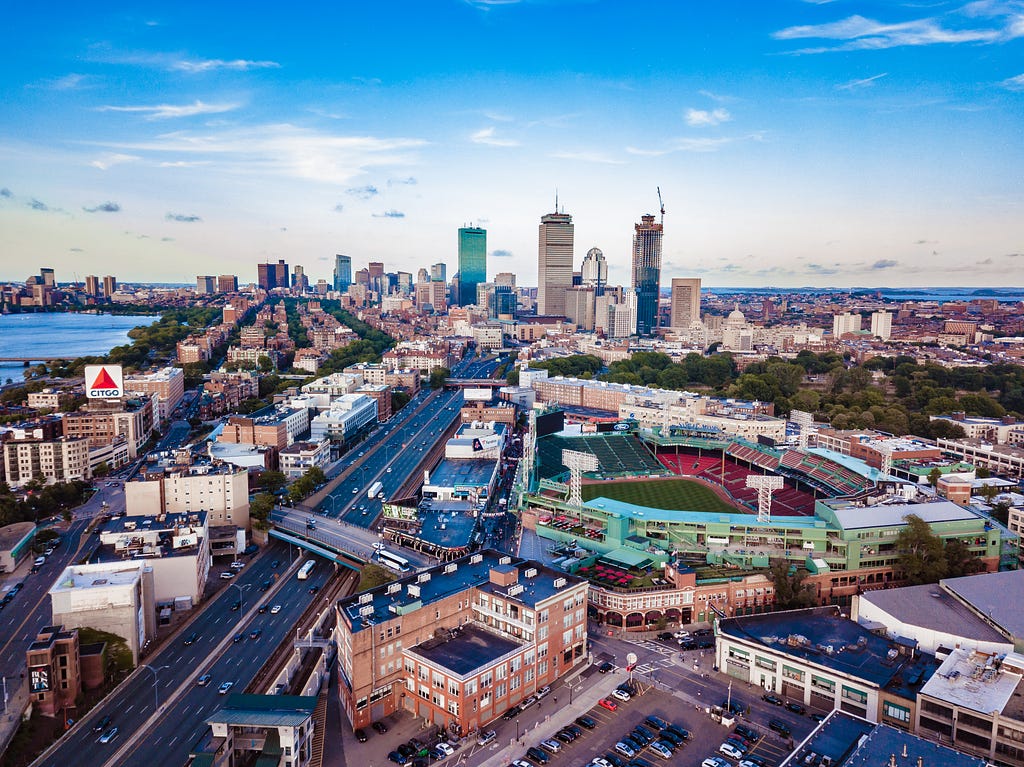I Spent $60,000 on a UX Design Bachelor’s Degree — Was it Worth it?

In 2022, I graduated from a University with a Bachelor of Science in User Experience Design. Although similar programs such as digital design, interactive media, and industrial design have been around for years. When I started my degree in 2018, UX was a fairly new term and job position (at least to the general workforce). In fact, when I applied to the program back in 2018 it wasn’t even called a ‘UX Design program,’ it was instead ‘Interactive & Social Media.’
I found the program by searching for mentions of UX in college course lists or area of study descriptions. As well as scanning through websites for “Top UX Design Undergraduate Programs,” in blogs or lists. One of the reasons I ended up choosing this strangely named “interactive media” program I had found is that out of all the colleges I looked at, it was the most relevant to UX, and at the time was accredited, unlike some of the other institutions I looked at during those years.
Does School Ranking Matter?

Finding a UX or even a product design degree was far and few between just 7 years ago, and there was always the worry in the back of my mind, that it had no merit. The program I ended up choosing in 2018 was in a major city, and had an overall student population of over 20,000 students. Yet what I didn’t know going into the program was the UX class size.
From word of mouth, I heard there were only around 50 students on campus enrolled in the “UX Program,” and during the 4 years I attended, it was rumored to have grown to around 80 students in the program, or about 20 students per class year. Which, based on the number of people I knew in the program, made sense. Ever since I enrolled, the program has continued to grow year after year.
My University also offered a 5-year program to get a Master’s Degree. The Graduate school boasted a larger student body and popularity, within its UX and HCI sector (Human Computer Interaction), which now has an estimated 500+ Students.
It was originally a safety school for me, and if you look at many of the current 2025 UX Design Program rankings (Undergraduate & Graduate, etc.) You’ll usually find the program I attended ranked in the middle or lower half of the top programs in the U.S., despite the small number of college programs to this day.
Although I went to a large school. The UX program was still being built, but I came out the other side with a job despite not going to a highly recognized or acclaimed program within the institution.
Top UX Programs – Best University UX Design Programs in US
Obviously do your own research, and some schools may be better than others. But as long as there is a solid university foundation, school rankings do not matter much as long as the resources you’re looking for are there.
Did I Learn a Lot?
In my first year at University, I learned a ton about usability, theory, and how to write and conduct user testing/interviews.
My professors were world-class designers coming from IBM and other top research institutions and media studios. Like many other professors, they gave design talks across the World and were doing very cool and impactful research and projects. In fact, many of my UX friends at college worked in their laboratories conducting UX Design or UX Research.
I had applied to a research laboratory where I was interested in doing research with but never received any faculty responses. It wasn’t until Junior year, using a recruiting website with my school email, that I started working in marketing and design at a startup based in the city, helping run their e-commerce website. I got the job with not much school resource help. Although I do owe a lot of credit to the school’s alumni network for helping me get my internship, as the company had good experiences with past students, and a staff member who had attended the school.

I was asked 3 years into my program by my Uncle, “Couldn’t you of learned UX by yourself?” It was a fair question, and my answer was “Yes, I could’ve learned myself,” but as I told him, “the networking was key: Teacher relationships, alumni network, and community projects I worked on were worth it. His only response was, “Sounds like an expensive networking opportunity.”
All this is fair criticism, and I am never one to say you should 100% go to college; there are other options. But it was cool to get the full college experience while still studying something I loved. Even if I could have learned fundamentals and done projects at a bootcamp or freelancing. I was only 18 at the time, what did I know? Everyone was going to college.
I wanted the college experience, and although my school wasn’t super traditional, I made some lifelong friends and had a lot of meaningful conversations and connections to people across the colleges. To this day people I met have given me insights across industries beyond UX.
7 Years ago, I bet on the Future
It was scary reading headlines of “UX is Dead” in 2018
I feel like people love to say stuff like UX is ‘dead’ or is ‘dying.’ It is for sure in its prime growth nowadays, people see a six-figure design job and think that they can do it. But few people genuinely care about UX. In fact, I could show you a handful of people in my degree program who I knew didn’t care about what we were learning or who had no passion for projects, and it showed.
When I made the decision in 2018 to pursue my degree, the UX job market was booming, and that scared me. What if UX was just a fad?
Even in the 2020–22 jobs cycle, when the UX market was booming again, it didn’t last. In late 2022 to present, job postings are looking few and far between for entry-level designers as hiring slowed in technology sectors.
But with the Job outlook booming in 2018, I had still made the bet that:
UX is the Future & UX will evolve no matter what.
When I searched for UX jobs in early 2022, it felt like the open opportunities were endless. Almost far beyond what I imagined. Businesses were scrambling for good designers to help with customer experience and people to be embedded in agile teams. You could work at startups, large companies, consulting firms, Fortune 500s, the world is digital, and experiences are yet to be improved.

I say the job market seems like a gold miner’s dream. But like I mentioned, there was saturation, and only the gold miner with the best laid out plans when headed out West would achieve success and strike gold. Others would take the venture and fail.
Self-taught, Bootcamp, undergraduate, graduate, and career transitioners all would fight for entry-level spots. Everyone and their mother were applying. It wasn’t uncommon on LinkedIn to see “300+ applicants” for popular companies’ entry-level jobs.
The good thing about a college degree is access to relevant internships and early career programs where degrees were requirements.
UX isn’t dead, and it never was dead, but it is changing. The discipline, the focus, and the understanding of UX are evolving now as we speak.
The degree doesn’t get you a job. Most of the time, an “in” or a “referral” is what gets people jobs. Along with a visible passion for UX and a desire to learn and grow.
A UX Degree might get Recruiters on your side, but not designers…
I received interviews at 3 out of 5 Fortune 500 internships I applied to during college.
I went to interviews at big corporate players like Amazon, Intuit, and Nationwide, but received no offers.
It is much safer for a recruiter to pick a candidate with a UX Degree and class or volunteer projects than to take an interview with a bootcamper or self-taught designer with little to no experience. Especially when it comes to internships. Many times, some kind of degree progress is a requirement.
But with that said, that does not mean a UX degree is a requirement, because it is most definitely not. Many of my co-workers studied Human Factors, Computer Science, Engineering, or Psychology.
Recruiters definitely did see me, not because of a degree but because of value. Junior year, I had a paid internship at a startup where I worked full-time during the Summer doing web design and marketing. I was able to evolve the role into a place where I could use my background in UX and add additional value and insight to their company that would lead me into an associate role.
When it came to my senior year in college, I began taking entry-level interviews at consulting firms or mid-size companies.
Entry-level jobs I was applying for ranged from $60k–$100k/year.
I accepted an offer Senior year of college, 6 months before I graduated.
How Much Did I Make Out of University?
Junior UX Designers in Boston, MA, range from $58,632 to $93,962 , with an average salary of $75,196. (2025)
https://www.comparably.com/salaries/salaries-for-junior-ux-designer-in-boston-ma
Comparably – Transparent Compensation & Culture

My first year in the industry as a junior designer, I signed a contract for around this median salary, with a signing bonus and a clear path to promotion. Eventually, I would get laid off and transition into a broader digital strategy role
A Technical Degree Could be Safer.
I feel like UX Design degrees are put in this weird category. I know HTML/CSS, JavaScript, and even a little Python (enough to understand and edit it). But I’m not a coder; in fact, I hate coding. I don’t want to build software, I want to design.
During my degree, I also did user research and surveying, but I’m not really a researcher or psychologist. I also did graphic and visual design, but I’m not an artist or illustrator. I’m far from a graphic designer.
Although these are all skills I could use.
In the end, I didn’t know what I was. A UX Designer? A problem solver?
Would I do it again?
I have no regret.
But part of me thinks a Technical Degree would’ve. been safer (Computer Science, Engineering, Physics).
(Although I probably would’ve hated every second of school).
Hear me out.
Even studying UX, by Junior year of college, I was burned out of school.
I had just learned about UX when I was 18 then started the degree when I was also 18. I wasn’t positive it was my passion; I thought it was super interesting, and it paid well.
If I was to do it all again I would think of getting a technical degree in Engineering for job security, then transition into design if I still wanted to do it. Now I’m super interested in aerospace, technology, AI, and robotics but the design roles in those areas are scarce.
Hopefully, one day I’ll be able to design for my passion in these advancing technologies, but it probably would’ve been easier to get into a lot of the spaces I grew to love with a technical degree. Because in the end, I am a problem solver, and fundamental technical problem solving is a high-demand skill.
I love what I do, but sometimes I feel the longing to design beyond commercial apps and software.
I wouldn’t be surprised if I even go to graduate school someday in the future. Whether that be in engineering or industrial design.
In conclusion. You don’t need a design degree to do design, but it helps.
Alternatives
There are so many success stories that don’t involve a degree; it is but one way to get a career in UX. Understand that you have to put in the time and work. I cannot preach for any bootcamps or career transition training. All I genuinely can say is that my college route worked for me and some of my friends, but not all of my friends.
Google is doing free certificates, people are mentoring for free, and there are resources all over. You can even read some of what I post here on Medium, from what I learned in college and my career.
All routes are different.
But for me, my $60,000 degree got me a top job in tech, in the city of my choice, working with top clients, at a sustainable salary in my early 20s.
In the end, it is your journey, not mine.
Hope sharing my story can help you.
Godspeed.
I Spent $60,000 on a UX Design Bachelor’s Degree — Was it Worth it? was originally published in UX Planet on Medium, where people are continuing the conversation by highlighting and responding to this story.